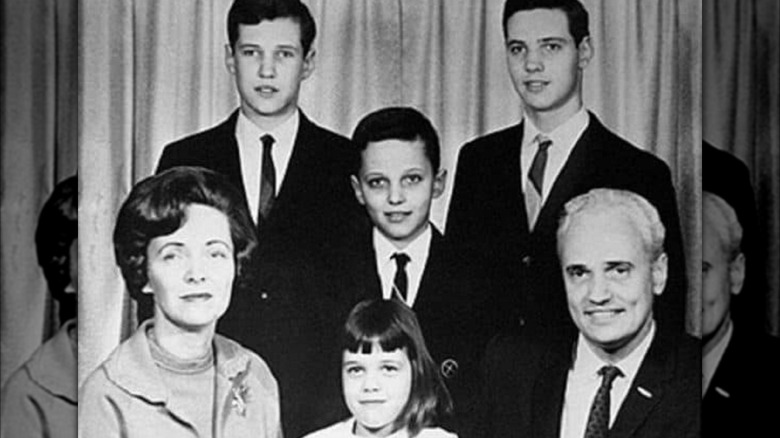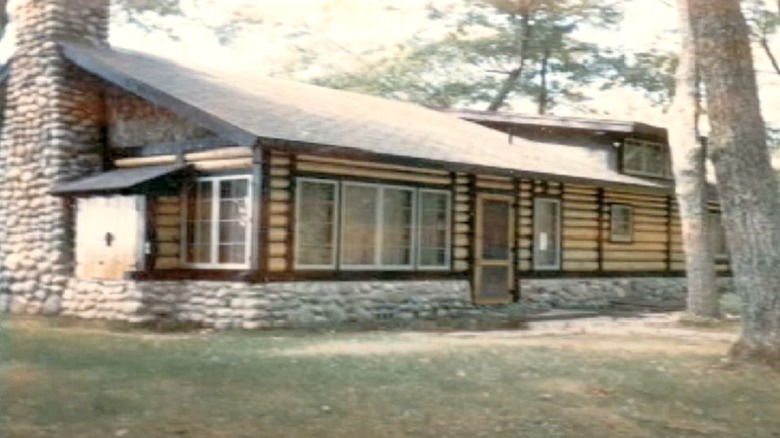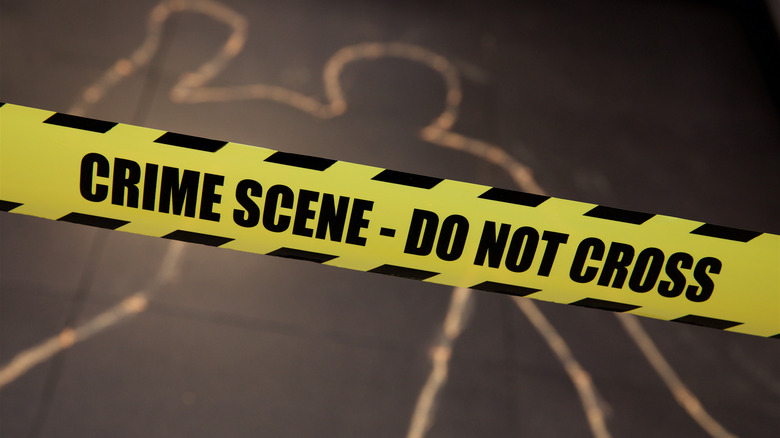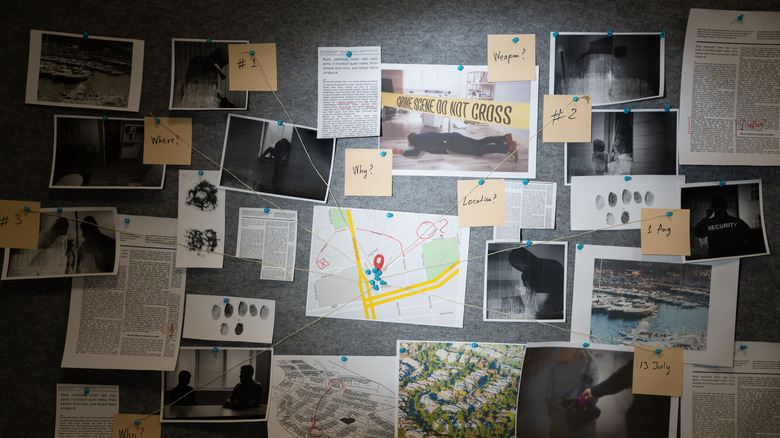Inside The Brutal Murders Of The Robison Family
In the summer of 1968, the little town of Good Hart, Michigan, was shocked to learn of the gruesome murders of the entire Robison family in their vacation home situated near Lake Michigan. A woman who resided near the Robisons complained about the foul odor coming from the residence (via Michigan's Other Side). The caretaker, Monty Bliss, went to the Robisons' cabin thinking the smell was coming from a dead animal, only to discover the lifeless bodies of members of the Robison family.
Authorities were called to the scene and they determined the identities of the deceased: husband and wife Richard (42) and Shirley (40); their sons Ritchie (19), Gary (16), and Randall (12); and their only daughter Susan (7), as reported by Michigan Live. The victims had gunshot wounds and were bludgeoned, most likely with a hammer that was found at the scene. The murders of the entire Robison family shook the community, and the idyllic town of Good Hart and the brutal event that took place there became the subject of headlines everywhere.
The Robison family
Richard Robison was a successful advertising executive who often dealt with investors. His wife, Shirley, was a homemaker, and together with their four children, they lived in Lathrup Village in Detroit. According to Up North Live, in June 1968, the entire family planned to spend the entire summer season in their cabin at the Blisswood Resort in Good Hart. The home was in a secluded spot surrounded by trees, and it was an ideal spot for rest and relaxation.
After the Robisons' arrival at their cabin, the patriarch visited the caretaker, Monty Bliss, to offer his condolences and pay his respects to his family, as his son had just died in a motorcycle accident, as noted by History by Day. During the visit, Richard also told the caretaker that he and his family would be heading to Florida, and they would be back to the cabin in July. No one saw the Robisons in the following weeks, but it was expected since Richard said they would be away for a few weeks. It wasn't until the neighbor noticed the foul smell that the cabin was inspected.
The crime scene and autopsy results
Authorities were called to the Robisons' cabin on July 22, 1968. Upon their arrival, they found the doors locked, and they gained entry into the home using the caretaker's keys. They found a window shattered, and each member of the Robison family was found deceased in a different room. It was also observed that the bodies were badly decomposed, per History By Day. Richard and his daughter Susan both suffered gunshot wounds and trauma to the head after being hit by a hammer, while the other members of the family only had gunshot wounds.
The bodies were examined and according to the pathologist, the Robisons were killed sometime on June 25, which was about a month before their bodies were discovered, as reported by Sword and Scale. That length of time coupled with the summer heat resulted in the advanced decomposition of the bodies, which prevented the examiner from determining the full extent of the Robisons' injuries.
The prime suspect
It was difficult to determine the motive for the murders, as those who knew the Robisons said they had no known enemies and were loving toward each other. The children were said to be polite and did well in school. No one had any idea why someone would kill an entire family in such a gruesome manner. Investigators looked into Richard Robison's business dealings as well (via Michigan's Other Side). He owned a magazine titled Impresario, and he interacted with many individuals. Investigators had a hunch that the murders may have had something to do with business.
The investigation led authorities to learn that Richard may have engaged in under-the-table deals that could have angered his clients. However, one person stood out for detectives during their investigation, per Sword and Scale. Joseph Scolaro III was Richard's employee, and he was placed in charge of the business while Richard was on vacation. It was also discovered that Scolaro had been embezzling money from the business while Richard was away.
The investigation into Joseph Scolaro III
As detectives looked deeper into Joseph Scolaro III, they found out that on the day the Robisons were murdered, Scolaro and Richard Robison had been in contact with each other 17 times, per phone records obtained, as noted by My American Odyssey. It is assumed that the calls were about the business' missing funds.
Based on the investigation, the Robisons were killed with a .22 caliber rifle and a .25 caliber Beretta. Detectives found out that Scolaro purchased two .25 caliber Berettas, one of which he gave to Richard. Scolaro's Beretta was collected and tested, but it was ruled out as the murder weapon. Robison's Berreta, however, was missing and couldn't be tested. According to Up North Live, Scolaro's alibi at the time of the murders couldn't be confirmed, and he failed two lie detector tests; the third test came out inconclusive.
A bloody shoe print was also found at the crime scene, and it was found to be a perfect match to Scolaro's boots. Although Scolaro's boots were brand new, investigators found out that he was known to typically purchase two of the same items. This led them to believe that the other pair was the one used during the Robison murders.
The case isn't officially closed
In December 1969, more than a year after the Robisons were murdered, investigators presented their case to the prosecutor in hopes of charging Joseph Scolaro III for the crimes. However, according to History by Day, the county's prosecutor refused to do so since all the pieces of evidence presented were circumstantial. There was not one piece of evidence that conclusively pointed to Scolaro as the murderer, and the case went cold.
After four years, a new prosecutor was elected, and the Robison case was reopened. This time, the new prosecutor agreed to charge Scolaro, but it was too late. Before a warrant was issued, he was found deceased in his office of an apparent suicide. A suicide note was left, and in it, Scolaro wrote that he was a liar and a cheat, but he insisted that he was innocent when it came to the Robison murders (via Good Hart Store). Although investigators had other suspects, they strongly believed that Scolaro was the murderer. As a result of his suicide, the case couldn't officially be closed and it remains categorized as unsolved and "inactive" to this day.





